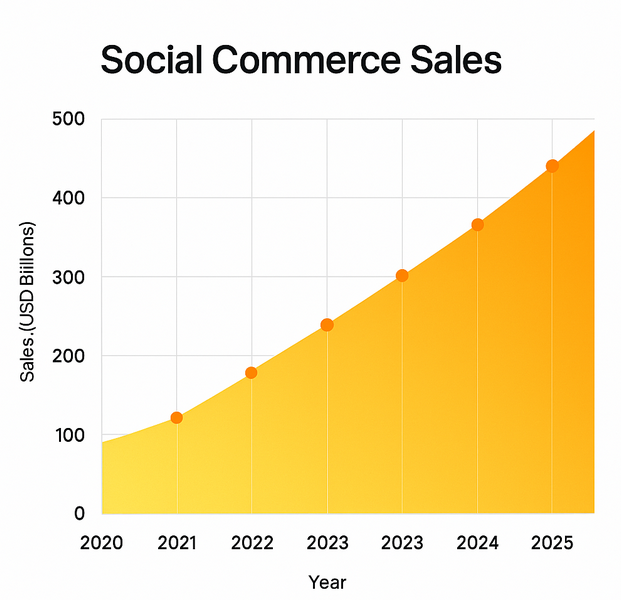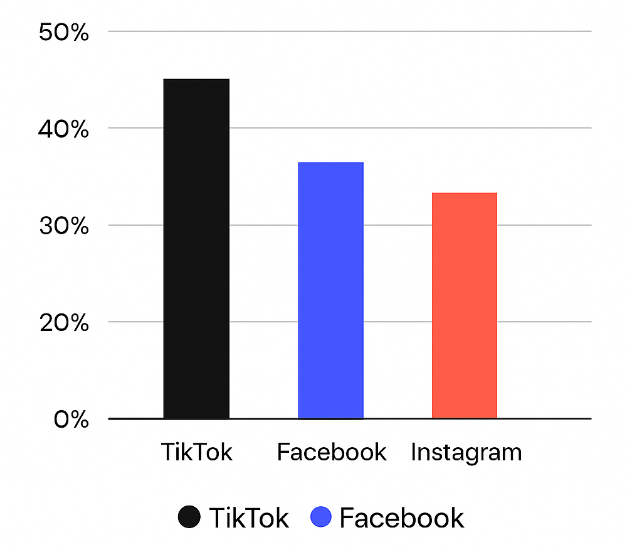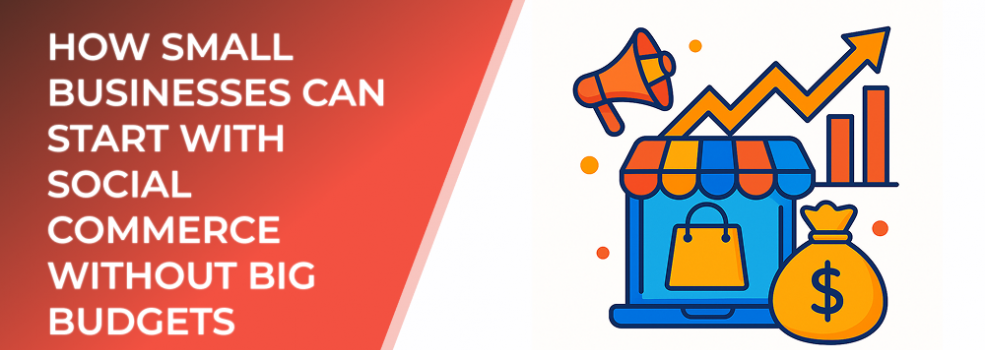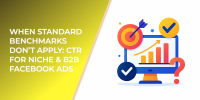Social commerce combines online shopping with the convenience of social media platforms like Facebook, Instagram, and TikTok. Instead of driving users to external websites, it lets them browse and purchase products directly within the app.
Projected growth of social commerce sales from 2020 to 2025 (USD billions / trillions)
For small businesses, this represents a huge opportunity. According to Statista, social commerce sales worldwide are projected to reach $1.2 trillion by 2027, with over 50% of consumers discovering new products via social media. These platforms are no longer just for engagement — they’ve become essential sales channels.
Step 1: Set Up a Free Facebook or Instagram Shop
You don’t need an expensive e-commerce website to start selling. Facebook and Instagram Shops allow small businesses to list products directly on their profiles. These are free to set up and integrate easily with your Facebook Page or Instagram Business Account.
Tips for setup:
-
Use high-quality images (natural lighting and simple backgrounds work best).
-
Write short, clear descriptions emphasizing key benefits.
-
Tag products in your posts and stories to make them shoppable.
Once set up, you can manage everything through Meta Commerce Manager, tracking views, clicks, and purchases.
Step 2: Leverage Organic Content Before Running Ads
If you’re working with a limited budget, focus first on organic reach. Social algorithms reward engaging, authentic content.
-
Post real photos and videos of your products in use.
-
Encourage customers to share pictures or testimonials.
-
Use trending Reels or Stories formats — short, vertical videos perform best for discovery.
According to Meta data, businesses that post 3–4 times per week can boost reach by up to 50% compared to those posting less frequently. Consistency matters more than production quality.
Step 3: Collaborate With Micro-Influencers

Percentage of U.S. users who make purchases via TikTok, Facebook, and Instagram in 2024
You don’t need celebrity partnerships to drive social commerce success. Micro-influencers — creators with 5,000 to 50,000 followers — tend to have stronger community trust and engagement rates.
Offer free products or small commissions in exchange for posts or story features. Since followers view their content as authentic, influencer-led product tags often lead to higher conversions than paid ads.
A report by Influencer Marketing Hub found that micro-influencer content generates 60% higher engagement than brand-owned posts. This makes it a cost-effective entry point for small businesses testing social selling.
Step 4: Use Retargeting Ads With Small Budgets
Once you’ve built a base of visitors or product viewers, consider retargeting ads. These campaigns specifically reach people who’ve shown interest but haven’t purchased yet.
Even a small daily spend of $5–10 can be effective. Use tools like LeadEnforce to create custom audiences based on engagement or website visits, and sync them with your Facebook Ads Manager.
Focus on dynamic product ads (DPAs), which automatically show users items they’ve interacted with before. Meta reports that retargeting ads can achieve up to 70% lower cost-per-conversion compared to prospecting campaigns.
Step 5: Take Advantage of Free Insights
Social platforms offer built-in analytics that help you optimize for free. Check your Instagram Insights or Facebook Page Overview regularly to identify top-performing posts and engagement trends.
Key metrics to watch:
-
Reach and engagement — which posts resonate most.
-
Clicks and conversions — which products drive interest.
-
Audience demographics — age, location, and behavior.
With these insights, you can refine your content strategy before investing in larger paid campaigns.
Step 6: Add Value Beyond Products
Consumers expect more than just sales pitches. Share behind-the-scenes content, customer stories, or tutorials showing how to use your products. This builds trust and keeps your feed engaging.
For example, if you sell handmade candles, create short videos showing how they’re poured or styled in real homes. These posts humanize your brand and encourage followers to engage — and eventually buy.
Step 7: Start Small, Learn, and Scale
You don’t need to spend thousands to make social commerce work. Start with the free tools, use organic content to build awareness, and only invest small amounts in ads once you see traction.
Track results, learn what resonates with your audience, and gradually scale your efforts. Over time, even modest social commerce activity can evolve into a strong sales channel.
Final Thoughts
Social commerce has leveled the playing field for small businesses. With creativity, consistency, and smart use of Meta’s tools, you can build a powerful presence on Facebook and Instagram without big ad budgets.
The key is authenticity and strategy — not spending. When used correctly, social commerce can turn your followers into customers and your content into conversions.

